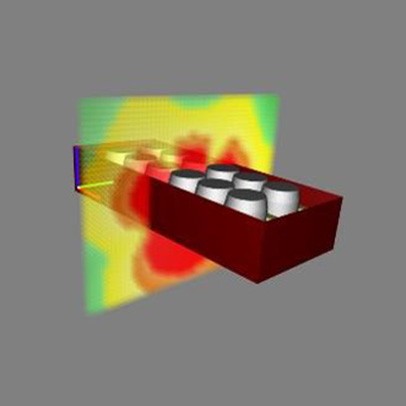National Waste Services (LLWR Ltd.), UK

Background
Nuclear Restoration Services at Winfrith NPP needed to move 1,068 sludge-filled,Treated Radwaste Store (TRS), drums for disposal as part of its decommissioning. The Low-Level Waste Repository was chosen as the designated disposal site for the drums.
Cyclife UK was in charge of the developing the methodology to handle and dispose the TRS drums and to undertake the on-site delivery.
The Challenge
As part of the project to dispose of Treated Radwaste Store (TRS) drums at Repository site, dose rate calculations were needed to estimate the dose accrual from their emplacement in the Repository vault.
DEMplus® is a 3D simulation software package designed for nuclear projects developed by Cyclife Digital Solutions. It includes a deterministic dose calculation method for multiple sources and shields. In this case, DEMplus® was used as a method to cross check the primary dose rate calculation performed in MCNP6 (a Monte Carlo method).
Cyclife UK needed to undertake the following:
- Methodology Development
- Methodology Testing and Compliance
- Radiation Dose Calculations
- Physical Placement
- 3D-Modelling Integration
Our Proposal
Key milestones
- 2016-2018: Define project requirements and BAT assessment
- 2019-2020: Detailed survey, BAT work and emplacement plan
- 2019-2021: Develop methodology, procure equipment and civil enabling works design
- 2020-2021: Equipment and methodology trials and infrastructure modifications
- 2021-2024: Ongoing drum emplacement activities
Key technical data
- Cyclife UK conducted a finite element analysis to assess structural integrity under diverse loads aligned with BS EN 13001-2:2021 (European and British Standard for Crane Safety, General Design and Load Actions)
- Multiple drum grabs were chosen to accommodate various lifting scenarios
- Cyclife UK investigated feasibility issues: operator exposure and fence-line dose rates with DEMplus®3D-based tool by Cyclife Digital Solutions
- DEMplus®3D-based software helps to simulate interventions and assess simultaneously their cost, time, waste, risk, and dose rates.
Process
A single drum was modelled, in DEMplus®, MicroShield and MCNP6. TRS drums consist of a cemented sludge sources, topped with a grout cap and contained within a steel drum.
- The drums were modelled in their transport arrangement.
- This comprised 12 drums located in a steel container, supported by wooden blocks. The 12 drums were also modelled outside the transport container in the same arrangement.
- The final step was the modelling of the TRS drums emplaced in the Repository vault.
Watch the short video explaining the project
Cyclife First Ever Non-Routine Disposal at LLWR for NRS Winfrith Site
Votre navigateur ne prend pas en compte le javascript.
Pour vous permettre d'accéder à l'information, nous vous proposons de consulter la vidéo Cyclife First Ever Non-Routine Disposal at LLWR for NRS Winfrith Site, watch the short explanation dans un nouvel onglet.
Customer Benefits
- Earlier disposal of the TRS drums
- Better utilisation of available space in a disposal vault, resulting in the use of less infill material
- No need for conontainerising the drums in half height ISO containers with the direct disposal of the encapsulated drums
"It is a significant achievement and a step closer to completing NRS decommissioning mission and returning the site to heathland with public access.” said Nuclear Restoration Services Winfrith NPP
Results
- Fast and easily checking measurement point, shield and source locations: 1,000 TRS drums checked
- Time saving with a total of 1,068 TRS drums checked efficiently
- Proven and safe solution
- Cost savings since the Intermediate-Level waste was re-categorised as Low-Level
- Rail transfer to TRS drums to Repository site, out of the Geological Disposal Facility
Cyclife provides enabling works that help accelerate decommissioning to allow the transport of large components from customers’ sites. Valuable metals are sent via trusted waste routes for recycling.
